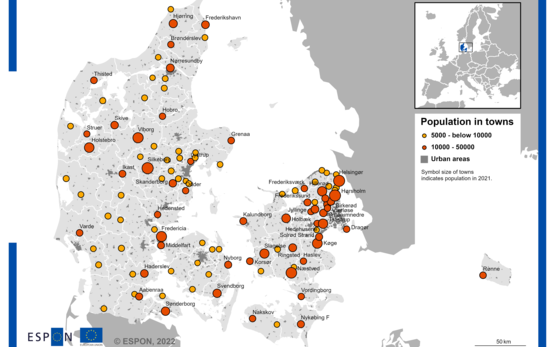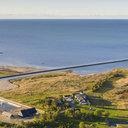Spotlight
-

Denmark, small and medium sized cities
Case Studies | August 25, 2022Looking for new activities and attractions to maintain vibrant town centres and develop appealing urban areas

Looking for new activities and attractions to maintain vibrant town centres and develop appealing urban areas

This report contributes to the Maritime Spatial Planning with two objectives: to undertake an analysis and characterization of the coastal and maritime planning and land-sea interactions from a mul

Article 174 of the TFEU states that: '’the Union shall aim at reducing disparities between the levels of development of the various regions and the backwardness of the least favoured regions.

This project, emanating from the targeted analysis project Maritime Spatial Planning and Land Sea Interactions (MSP-LSI) explores the potential spatial tensions between the deployment of renewable sources of blue energy (energy derived from our seas and oceans), with a particular focus on offshore wind energy, and other (potential) utilisations of the European seas.

This study analyses the implementation of an Integrated Territorial Investment (ITI) targeting small islands of the North Aegean Region in the 2014-2020 programming period, considering observed pat
The City of Gothenburg is aiming to become a better place to age in. Every göteborgare, should look forward to growing old in the city.
By 2030, nearly one out of every three Barcelona residents will be 60 years old or over.
The city of Amsterdam is growing! This growth applies to the inhabitants of all ages and therefore also for older people.
The “State of the European Territory”, a publication that sheds light on the main territorial development trends in Europe and offers evidence and policy advice to those designing policies - especi
This ESPON policy brief aims to inform European, national, regional and urban authorities about how to reuse spaces and buildings to help achieve sustainable urbanisation. And support discussions surrounding the reuse of spaces and buildings as a means to facilitate the transition towards a circular economy at the intergovernmental level during the Croatian Presidency of the Council of the EU’s first semester of 2020.
Population ageing raises common challenges for cities: to adapt their environments physically and socially, so that older people’s quality of life remains unaffected.
Green infrastructure (GI) is made up of interconnected green and/or blue areas that are developed through a strategic planning approach that creates solutions to problems of land conservation, ecological and social effects of urban sprawl, and the rapid fragmentation of landscapes. The ESPON policy brief "Green Infrastructure" promotes a GI approach in spatial planning that not only connects different elements of nature, but also crosses ecological and political boundaries and links sector policies
The emergence of the widespread deployment of advanced technologies, such as artificial intelligence, sensor technologies, cloud computing, open data, the Internet Of Things and blockchain, has re-
A transition towards a circular economy does not happen by itself; it needs to be supported and encouraged by policy and planning.
The ESPON scientific report aims to support the transition towards a new quality territorial research reflect upon ideas and inspiration for the next generation of scie
The free movement of labour is one of the “four freedoms” of the European Union and its single market.
Most Cross-border Public Services (CPS) deal with environment protection, civil protection and disaster management and transport. In the future CPS development is expected in the fields of spatial planning, economic development, tourism and culture. Many regions in Europe also explore possibilities to establish CPS dealing with health care and labour market challenges.